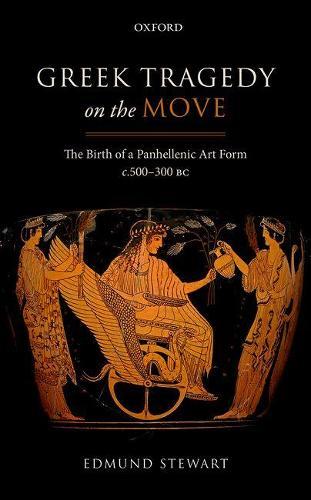Overview
Greek tragedy is one of the most important cultural legacies of the classical world, with a rich and varied history and reception, yet it appears to have its roots in a very particular place and time. The authors of the surviving works of Greek tragic drama-Aeschylus, Sophocles, and Euripides-were all from one city, Athens, and all lived in the fifth century BC; unsurprisingly, it has often been supposed that tragic drama was inherently linked in some way to fifth-century Athens and its democracy. Why then do we refer to tragedy as 'Greek', rather than 'Attic' or 'Athenian', as some scholars have argued? This volume argues that the story of tragedy's development and dissemination is inherently one of travel and that tragedy grew out of, and became part of, a common Greek culture, rather than being explicitly Athenian. Although Athens was a major panhellenic centre, by the fifth century a well-established network of festivals and patrons had grown up to encompass Greek cities and sanctuaries from Sicily to Asia Minor and from North Africa to the Black Sea. The movement of professional poets, actors, and audience members along this circuit allowed for the exchange of poetry in general and tragedy in particular, which came to be performed all over the Greek world and was therefore a panhellenic phenomenon even from the time of the earliest performances. The stories that were dramatized were themselves tales of travel-the epic journeys of heroes such as Heracles, Jason, or Orestes- and the works of the tragedians not only demonstrated how the various peoples of Greece were connected through the wanderings of their ancestors, but also how these connections could be sustained by travelling poets and their acts of retelling.
Full Product Details
Author: Edmund Stewart (Teaching Fellow in Greek Literature and Culture, Teaching Fellow in Greek Literature and Culture, University of Warwick)
Publisher: Oxford University Press
Imprint: Oxford University Press
Dimensions:
Width: 14.70cm
, Height: 2.20cm
, Length: 22.30cm
Weight: 0.474kg
ISBN: 9780198747260
ISBN 10: 0198747268
Pages: 280
Publication Date: 22 June 2017
Audience:
College/higher education
,
Professional and scholarly
,
Tertiary & Higher Education
,
Professional & Vocational
Format: Hardback
Publisher's Status: Active
Availability: To order

Stock availability from the supplier is unknown. We will order it for you and ship this item to you once it is received by us.
Reviews
All in all, this is an interesting book, which has the merit of restoring tragedy and its dissemination to a wider geographical and literary context. ... This is a well-argued, well-researched book, with a very clear structure (sometimes to the point of irritatingly repeating intermediate questions or conclusions). Stewart reveals a complete command of the relevant bibliography, including works in languages other than English. --Elodie Paillard, Bryn Mawr Classical Review
All in all, this is an interesting book, which has the merit of restoring tragedy and its dissemination to a wider geographical and literary context. ... This is a well-argued, well-researched book, with a very clear structure (sometimes to the point of irritatingly repeating intermediate questions or conclusions). Stewart reveals a complete command of the relevant bibliography, including works in languages other than English. --Elodie Paillard, Bryn Mawr Classical Review
All in all, this is an interesting book, which has the merit of restoring tragedy and its dissemination to a wider geographical and literary context. ... This is a well-argued, well-researched book, with a very clear structure (sometimes to the point of irritatingly repeating intermediate questions or conclusions). Stewart reveals a complete command of the relevant bibliography, including works in languages other than English. --Elodie Paillard, Bryn Mawr Classical Review
Author Information
Edmund Stewart is Teaching Fellow in Greek Literature and Culture at the University of Warwick, having previously taught Classical Languages and Literature at the universities of Nottingham and Leeds. His research interests focus on the dissemination of Greek tragedy, Greek poetry, and ancient professionalism and he is currently working on an edited volume on the ancient labour market in Greece and Rome.




